It‘s a detective case that has taken thirty years to solve, and has links even further back in time with the Bankes family that once owned most of Purbeck.
Four beautifully crafted bronze tortoises were originally commissioned in 1853 by pet-mad William John Bankes, whose family used to own Corfe Castle and Studland, before being left to the National Trust in the 1980s.
The family also built the mansion Kingston Lacey near Wimborne, where the tortoises provided the feet for an Italian marble garden ornament. However in 1992 they were stolen.
After an initial hunt, all hope of recovering them was lost. But this tortoise-paced story, while not haring to a conclusion, was destined to have a happy ending.
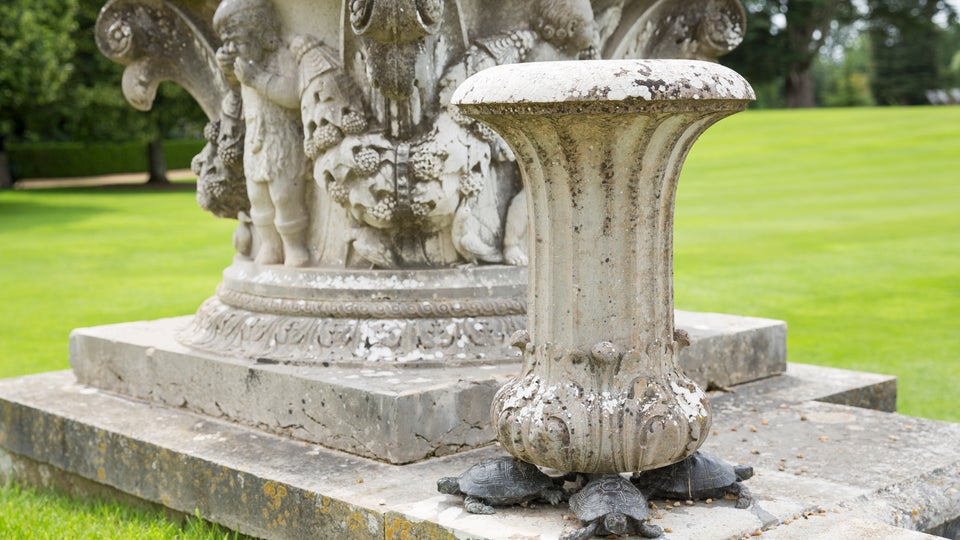
The tortoises were used to support Italian marble urns
“Hope had faded”
The historic bronze tortoises – four of sixteen created by the Italian sculptor Marochetti in the 19th Century – were spotted by an eagle-eyed former head curator for the National Trust who noticed them in an auction catalogue.
James Rothwell, national curator for decorative arts at the National Trust, explained:
“Hope had faded over the years of recovering the stolen bronzes, and so I was astonished this spring to be contacted by Tim Knox, director of the Royal Collection and a former head curator at the National Trust, to say that he had seen a cast bronze tortoise, made by Marochetti, listed for auction.
“Could this be one of those stolen all those years ago? Close inspection of the tortoise revealed it was identical to those still at Kingston Lacy.”
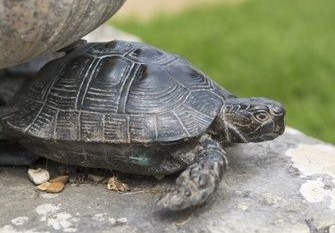
The tortoises had been missing for thirty years
Clues to their identity
Tell-tale signs confirming the identification were the hole in the tortoise’s shell where it had been attached to the marble garden urn, and the Roman numeral ‘I’ branded into the bronze, which was part of Marochetti’s system for numbering each set of four.

Distinctive hole in the shell provided a vital clue
Trail led to the other three
James Rothwell added:
“The tortoise’s owner had purchased it online and subsequently put it up for sale. Once he and the auction house learned that it was in fact a cast of Bankes’ beloved pet, they withdrew it from the sale and returned it to the team at Kingston Lacy.”
The discoveries didn’t end there. The trail of tortoise number ‘I’ eventually led to an antiques dealer who had acquired the set of four from a scrap metal dealer, completely unaware of their history. And so, the remaining three were reunited with their lost companion.

The opulent house and gardens at Kingston Lacy
Close friend of Lord Byron
The tortoises were originally commissioned by William John Bankes (1786 – 1855), heir to Kingston Lacy and a collector and Egyptologist.
He was a close friend of flamboyant Romantic poet Lord Byron, who summed Bankes up as ‘the father of all mischief’.
Following travels to Europe, Egypt and the Middle East, Bankes brought a wealth of antiquities and art treasures to Kingston Lacy.

Corfe Castle, once owned by the Bankes family
Lost in Civil War
The mansion was originally built by Sir Ralph Bankes after his Royalist father Sir John Bankes lost Corfe Castle during the Civil War to the parliamentarians and explosives.

The family name is remembered at a Corfe Castle hotel: the Bankes Arms
Italian influence
William John Bankes commissioned renowned architect Sir Charles Barry to create the magnificent Italian-influenced interiors seen today at Kingston Lacy. He made the house and gardens a showcase for some of the finest art, decoration and sculpture. He also had a particular fondness for tortoises and kept several as pets.
In Paris in 1853, he commissioned the Italian-born sculptor Baron Carlo Marochetti to produce a set of sixteen bronze sculptures of tortoises to support four Verona marble urns for the grounds of the family home.
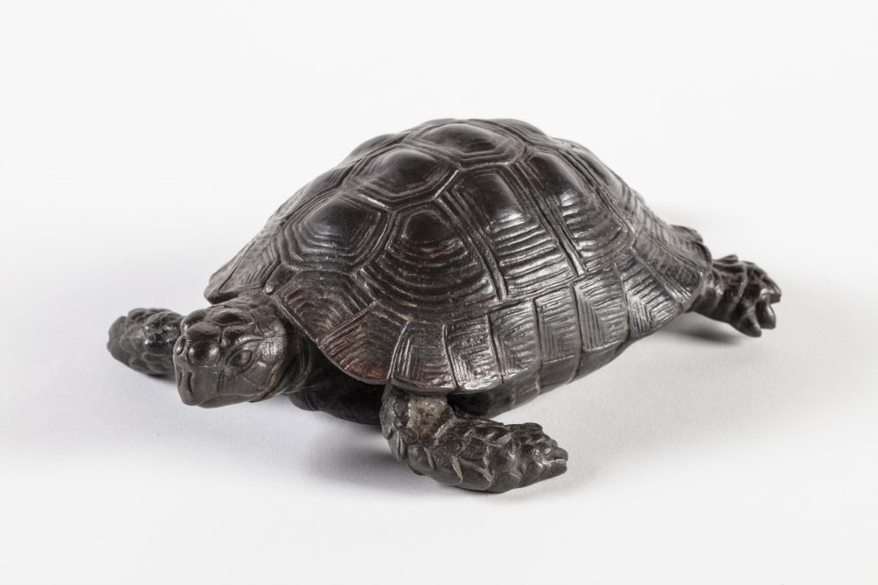
The bronze tortoises were modelled on a family pet
Lions at Trafalgar Square
Later, Marochetti was responsible for casting the lions that guard Nelson’s column in Trafalgar Square.
Determined that the sculptures were as accurate as possible, Bankes supplied Marochetti with one of his pet tortoises as a model. The sculptor’s studio in Paris carefully created a mould from the animal which was used to cast identical bronzes.
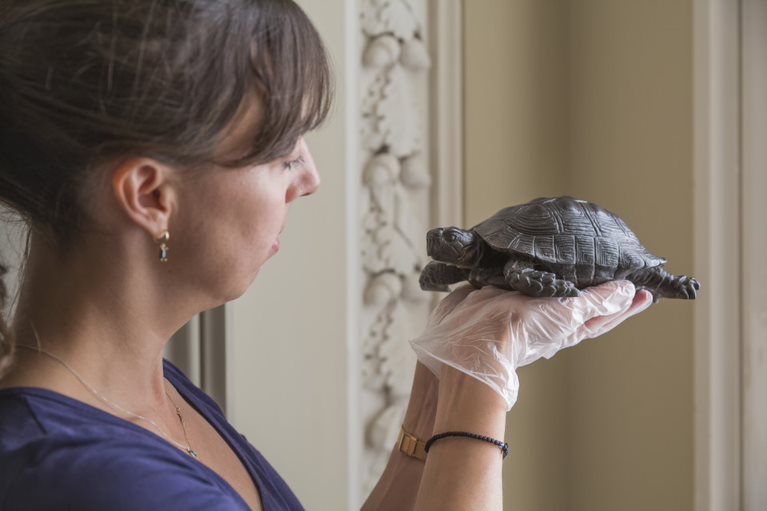
Curator Elena Greer says William John Bankes adored tortoises
Gardener spotted they had been stolen
The tortoises supported the urns at Kingston Lacy for over 140 years, admired by successive generations of the Bankes family and by National Trust visitors after the property passed to the charity in 1982.
But, on the morning of the 19th July 1992, one of the gardeners noticed that four of the tortoises supporting one of the urns, had been stolen.

A gardener first spotted that the tortoises had been stolen
Welcome return
The theft was reported to the police, and staff swiftly removed the remaining bronze tortoises for safe-keeping, replacing all sixteen with replicas, which have remained in place ever since.
The return of the four bronze tortoises to Kingston Lacy has provided the chance for them to go on display for visitors to see and for more research into their story and significance.
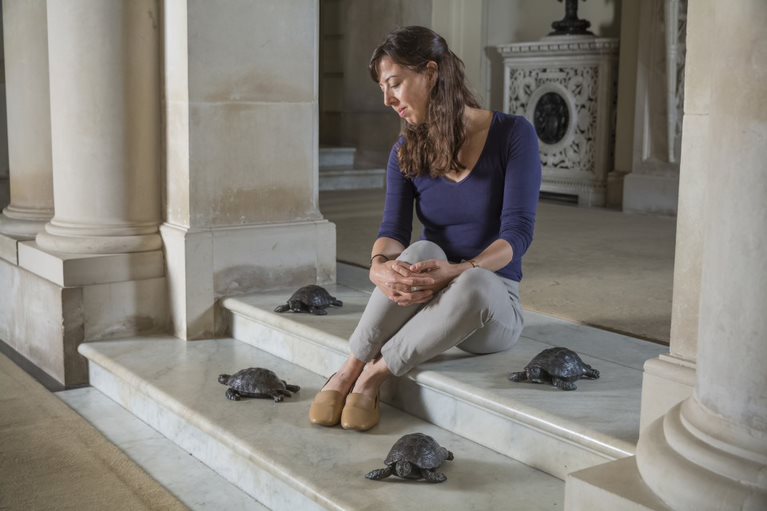
After thirty years the four tortoises have found their way home
“Loved tortoises”
Dr Elena Greer, property curator at Kingston Lacy said:
“We know that William John Bankes loved tortoises, not only because he kept them as pets and from the commission of the bronzes for the urns, but from other clues around the house, for example, he added tortoises to the bases of the two Italian giltwood candelabra in the saloon.
“The idea of the tortoise or turtle holding up the earth on its back is referenced in a number of mythologies and appears in John Locke’s ‘An Essay concerning human understanding’ of which we have copies that belonged to William John’s father. Perhaps his interest in the creature stemmed from having read this.”
The bronze tortoises are now on display at Kingston Lacy. For further information and opening times visit the National Trust website

Visitors can see the long-lost tortoises at the National Trust property





